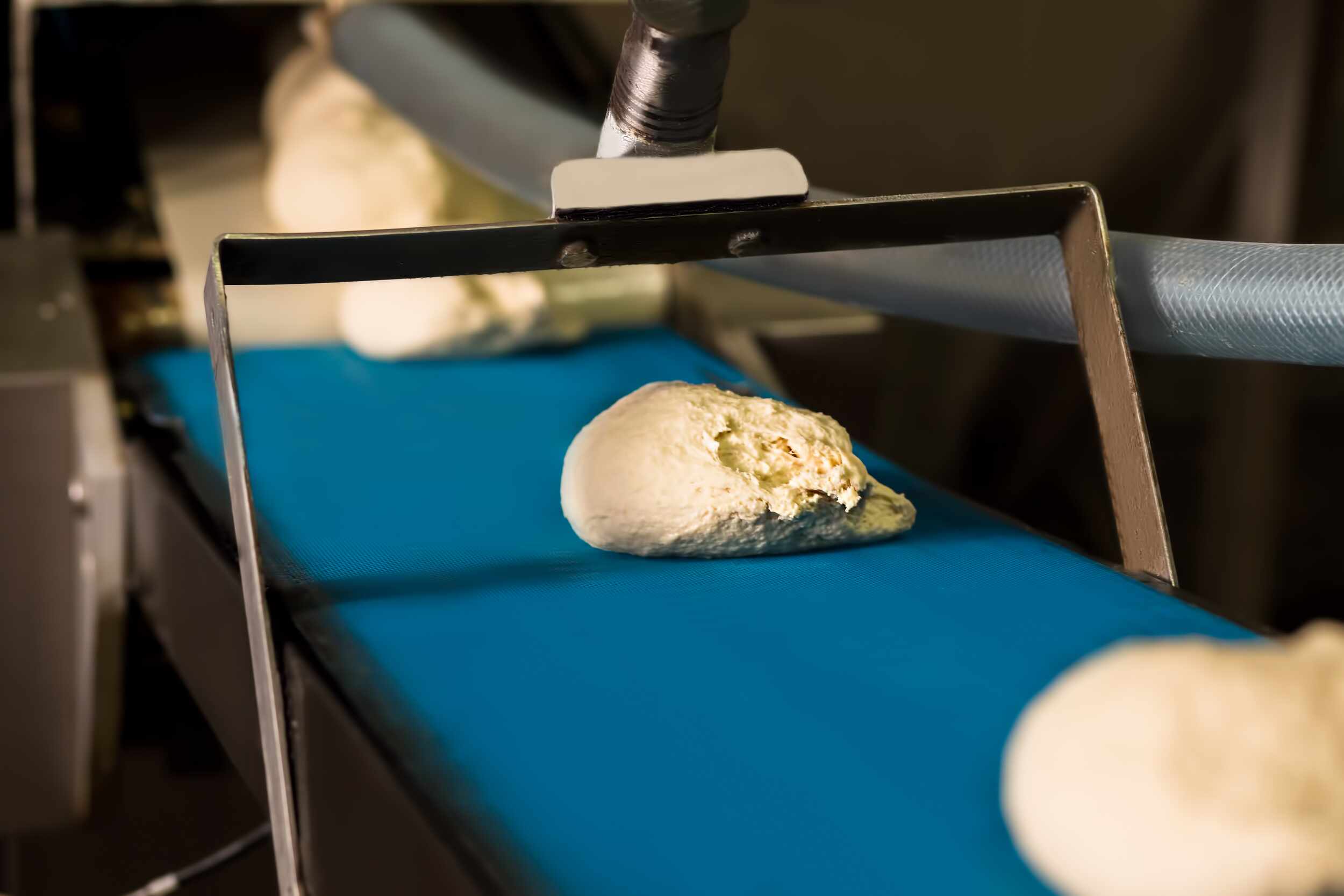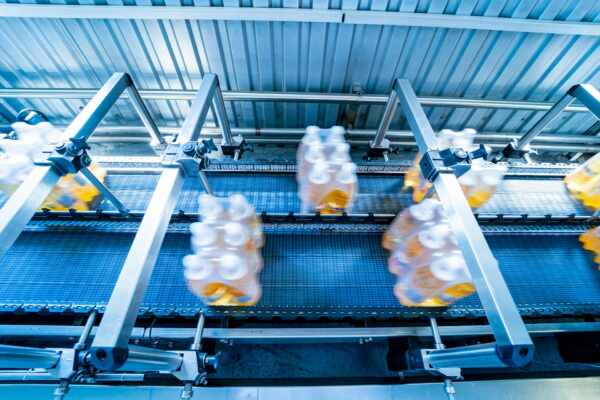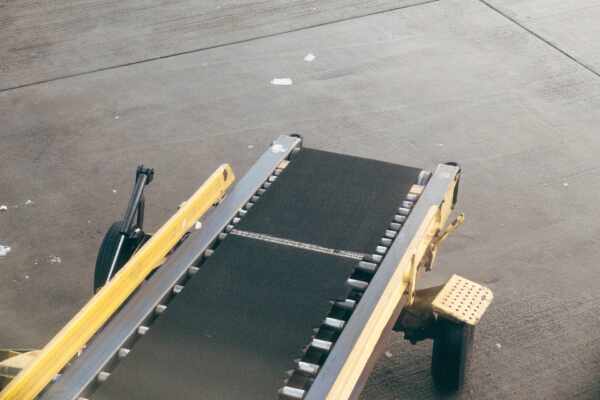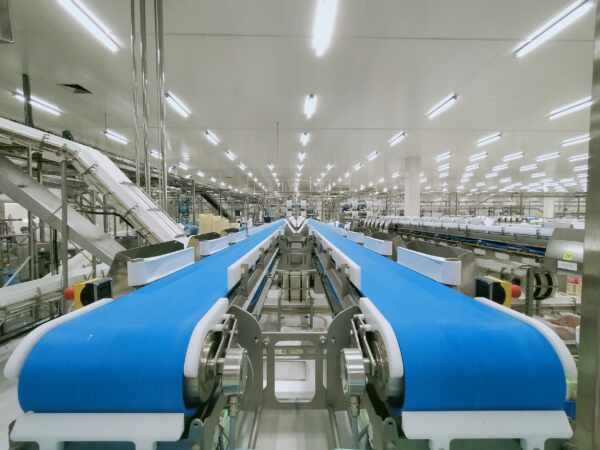The efficiency of your food manufacturing facility is contingent on the reliability and smooth operation of its conveyor belt systems. Conveyor belts play a critical role in handling, processing, and packaging food products, making it essential to resolve any issues as they arise to minimise downtime and maintain operational efficiency.
If left unaddressed, conveyor belt problems can lead to decreased productivity, increased costs, and even compromised food safety. As a food manufacturer, it’s crucial to be aware of the possible hiccups that may arise and be prepared to handle them effectively.
This comprehensive guide will explore common conveyor belt issues encountered in food manufacturing facilities, such as wear and tear, misalignment, tracking problems, and more. We will provide detailed troubleshooting tips and preventive measures to help you maintain your conveyor belt system’s efficiency, reliability, and longevity. Our objective is to give you the knowledge and tools needed to identify problems early and resolve them promptly, ensuring minimal disruption to your production line.
Whether you’re working with steel belts, modular belts, fabric belts, or other types of conveyor systems, familiarising yourself with potential problem areas and understanding how to troubleshoot them is key to maintaining continuous efficiency and meeting stringent food safety standards. By being proactive in addressing conveyor belt issues, you can save valuable time, resources, and ultimately contribute to the long-term success of your food manufacturing facility.
Additionally, we will discuss the importance of partnering with trusted conveyor belt experts, like Change Parts Pty Ltd, who offer a wide range of products, services, and support. When problems arise, the expertise and resources provided by a reliable partner can lead to swift resolutions and peace of mind.
A Guide to Conveyor Belt Troubleshooting in Food Manufacturing Facilities
Identifying Common Conveyor Belt Issues
To effectively troubleshoot your conveyor belt system, it’s essential to first recognise the common issues that can hamper their efficiency and performance. Here are some typical problems that can arise in food manufacturing facilities:
1. Belt wear and damage: Normal wear and tear, sharp or abrasive materials, and debris can cause the belt material to thin or suffer cuts and gouges, impacting the conveyor system’s performance.
2. Misalignment and tracking issues: Conveyor belts that are misaligned or improperly tracked can lead to uneven wear, belt slippage, and inefficiencies in the production process.
3. Mechanical problems: Pulleys, rollers, bearings, or drive components may experience issues due to wear, damage, or lack of lubrication, affecting the conveyor system’s efficacy.
4. Drive slippage: Belts that frequently slip or lose traction could indicate problems with belt tension, motor drives, or other components that control the conveyor belt’s movement.
Troubleshooting Tips and Solutions
Once you have identified the primary issue affecting your conveyor belt system, implement the following troubleshooting methods to resolve the problem and restore optimal performance:
1. Belt wear and damage: Inspect the conveyor belt for signs of wear or damage regularly. If excessive wear or damage is detected, repair or replace the belt as needed. In addition, ensure that any debris or sharp materials are removed promptly to prevent further damage.
2. Misalignment and tracking issues: Check the conveyor belt’s alignment and tracking during routine inspections. Make necessary adjustments to keep the belt running straight and prevent uneven wear. Consult the manufacturer’s guidelines for proper alignment and tracking procedures.
3. Mechanical problems: Examine the pulleys, rollers, bearings, and drive components for signs of wear or damage. Ensure that they are adequately lubricated and replace any faulty components as needed. Additionally, schedule routine inspections and maintenance to maintain the system’s mechanical integrity.
4. Drive slippage: Investigate the underlying cause of drive slippage in your conveyor belt system. Adjust belt tension, inspect motor drives, and evaluate other components that may contribute to the slippage to prevent further issues.
Creating a Preventive Maintenance Plan
Implementing a preventive maintenance plan for your conveyor belt system is essential to prevent problems from arising in the first place or detect them early, mitigating costly downtime and inefficiencies. Consider the following elements when creating your maintenance plan:
1. Inspection schedules: Establish a regular schedule for inspecting the conveyor belts and associated components, such as rollers, pulleys, and motor drives.
2. Lubrication: Ensure that the conveyor belt system is appropriately lubricated, following manufacturer recommendations for the proper lubrication type and frequency.
3. Cleaning and sanitation: Schedule regular conveyor belt cleanings and sanitation to maintain food safety standards and prolong the life of the conveyor system.
4. Component replacement: Replace damaged or worn components as needed to maintain efficiency and prevent further issues from occurring.
5. Monitoring and data analysis: Utilise monitoring tools or software to track the performance of your conveyor belt system over time, identify potential problems, and fine-tune your preventive maintenance plan as needed.
Partnering with Conveyor Belt Experts
When it comes to troubleshooting conveyor belt issues and maintaining your system’s efficiency, partnering with a reliable conveyor belt expert can make all the difference. Trusted industry professionals, like Change Parts Pty Ltd, not only provide high-quality conveyor belts and components but also offer expert advice, support, and maintenance services tailored to your unique requirements. By collaborating with a reputable partner, you can ensure early detection and swift resolution of any conveyor system issues, saving valuable time and resources.
Conclusion
Effective troubleshooting is vital to maintaining the efficiency and reliability of your conveyor belt system, as well as ensuring the highest levels of food safety in your food manufacturing facility. By identifying common issues, implementing troubleshooting solutions, and establishing a comprehensive preventive maintenance plan, you can keep your conveyor belt system running smoothly and contribute to your facility’s long-term success.
Partnering with a dependable conveyor belt expert like Change Parts Pty Ltd can provide valuable insights, resources, and support to help you optimise your system and overcome any challenges that may arise.
Don’t let conveyor belt issues hinder your food manufacturing facility’s success. Reach out to Change Parts Pty Ltd today for expert guidance, reliable conveyor systems, and dedicated support to keep your production line running at peak efficiency.




